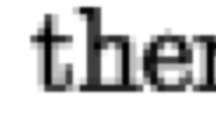Abstract
In this paper we present a modal approach to “contrastive logic”, the logic of contrasts as these appear in natural language conjunctions such as ‘but’. We use a simple modal logic, which is an extension of the well-knownS5 logic, and base the contrastive operators proposed by Francez in [2] on the basic modalities that appear in this logic. We thus obtain a logic for contrastive operators that is more in accord with the tradition of intensional logic, and that, moreover — we argue — has some more natural properties. Particularly, attention is paid to nesting contrastive operators. We show that nestings of ‘but’ give quite natural results, and indicate how nestings of other contrastive operators can be done adequately. Finally, we discuss the example of the Hangman's Paradox and some similarities (and differences) with default reasoning.
Similar content being viewed by others
References
B.F. Chellas,Modal Logic: An Introduction (Cambridge University Press, Cambridge/London, 1980).
N. Francez, Contrastive logic, Techn. Report No. 228, Technion, Haifa, Israel (1991).
M.L. Ginsberg,Introduction of “Readings in Nonmonotonic Reasoning (Morgan Kaufmann, Los Altos, 1987).
J.Y. Halpern and Y. Moses, A guide to the modal logics of knowledge and belief,Proc. IJCAI'85 (1985) 480–490.
S. Hanks and D. McDermott, Nonmonotonic logics and temporal projection,Artificial Intelligence 33 (1987) 379–412.
J. Hintikka,Knowledge and Belief (Cornell University Press, Ithaca, NY, 1962).
W. van der Hoek, Systems for knowledge and belief,J. of Logic and Computation 3(2) (1993) 173–195.
G.E. Hughes and M.J. Cresswell,An Introduction to Modal Logic (Methuen, London, 1968).
G.E. Hughes and M.J. Cresswell,A Companion to Modal Logic (Methuen, London, 1984).
J.-J. Ch. Meyer, An analysis of the Yale shooting problem by means of dynamic epistemic logic,Proc. 7th Amsterdam Colloquium, eds. M. Stokhof and L. Torenvliet, ITLI, University of Amsterdam (1990) pp. 317–326.
J.-J. Ch. Meyer and W. van der Hoek, Nonmonotonic reasoning by monotonic means,Proceedings JELIA'90, ed. J. van Eijck, LNCS 478 (Springer, 1991) pp. 399–411.
J.-J. Ch. Meyer and W. van der Hoek, A modal logic for nonmonotonic reasoning, in:Nonmonotonic Reasoning and Partial Semantics, eds. W. van der Hoek, J.J. Ch. Meyer, Y.H. Tan and C. Witteveen (Ellis Horwood, Chichester, 1992) pp. 37–77.
J.-J. Ch. Meyer and W. van der Hoek, Counterfactual reasoning by (means of) default,Annals of Mathematics and Artificial Intelligence 9 (1993) 345–360.
J.-J. Ch. Meyer and W. van der Hoek, An epistemic logic for defeasible reasoning using a meta-level architecture metaphor, VU-Report IR-329, Amsterdam (1993).
J.-J. Ch. Meyer and W. van der Hoek, A (cumulative) default logic based on epistemic states, VU-Report IR-288, Amsterdam (1982); extended abstract in: Symbolic and quantitative approaches to reasoning and uncertainty,Proc. ECSQARU'93, Granada, eds. M. Clarke, R. Kruse and S. Moral (Springer-Verlag, Berlin, 1993) pp. 265–273.
J.-J. Ch. Meyer and W. van der Hoek,Epistemic Logic for Al and Computer Science (Cambridge University Press, Cambridge, 1995).
R.C. Moore, Semantical considerations on nonmonotonic logic,Artificial Intelligence 35 (1988) 75–94.
R. Reiter, A logic for default reasoning,Artificial Intelligence 13 (1980) 81–132.
R. Reiter, Nonmonotonic reasoning,Annual Reviews of Comp. Sci. 2 (1987) 147–184.
P.-Y. Schobbens, Exceptions for algebraic specifications: on the meaning of “but”,Science of Computer Programming 20 (1993) 73–111.
P.-Y. Schobbens, Personal communication.
F. Veltman, Data semantics and the pragmatics of indicative conditionals, in:On Conditionals, ed. E.C. Traugott (Cambridge University Press, Cambridge, 1986).
Y. Winter and M. Rimon, Contrast and implication in natural language,Journal of Semantics 11 (1994) 365–406.
Author information
Authors and Affiliations
Additional information
But but us no buts, as they say.
Also partially supported by Nijmegen University, Toernooiveld, 6525 ED Nijmegen, The Netherlands.
Rights and permissions
About this article
Cite this article
Ch. Meyer, J.J., van der Hoek, W. A modal contrastive logic: The logic of ‘but’. Ann Math Artif Intell 17, 291–313 (1996). https://doi.org/10.1007/BF02127972
Issue Date:
DOI: https://doi.org/10.1007/BF02127972




